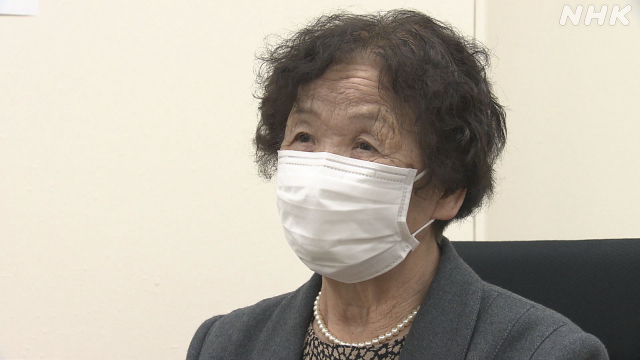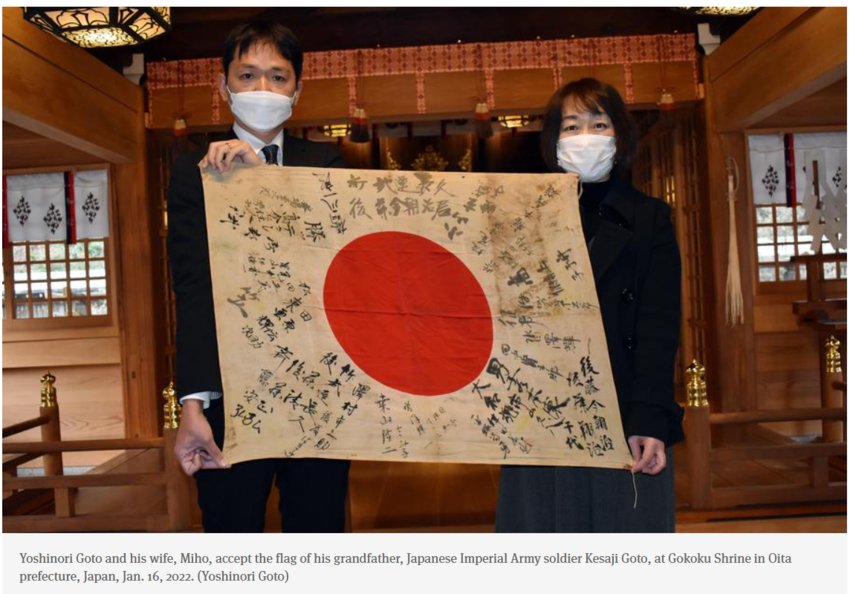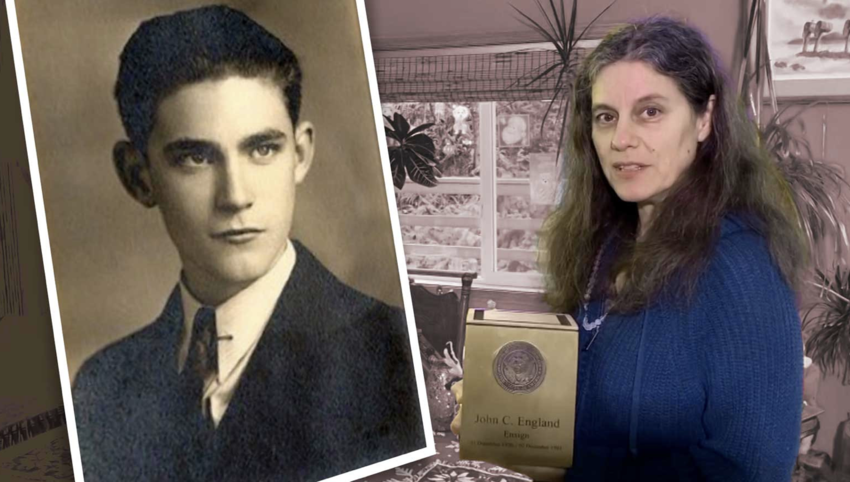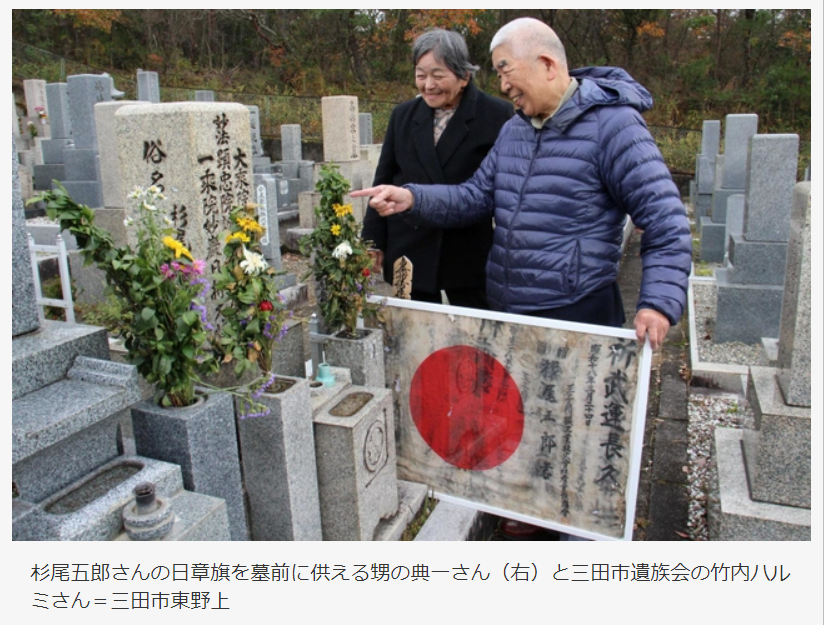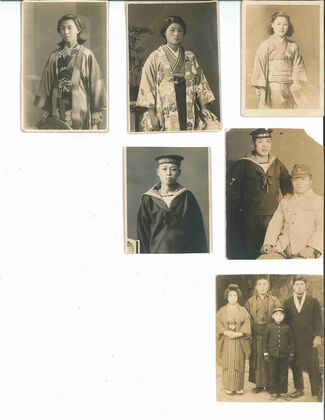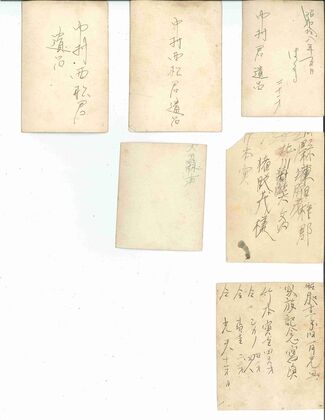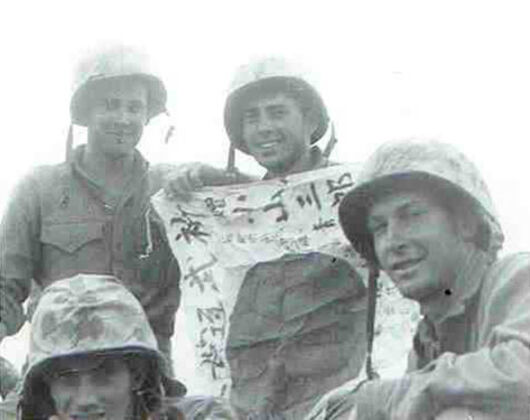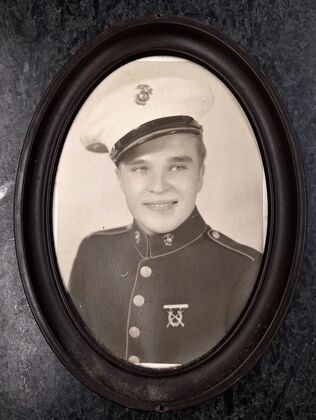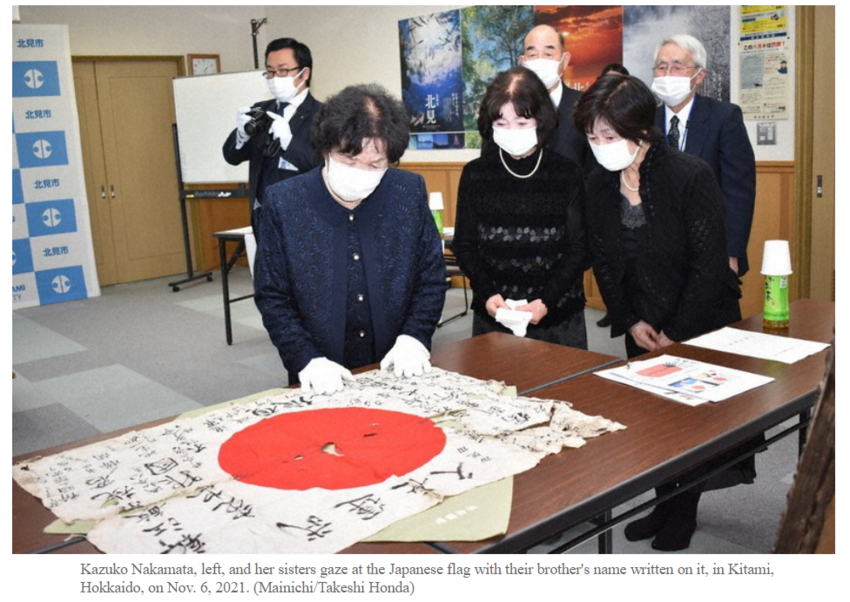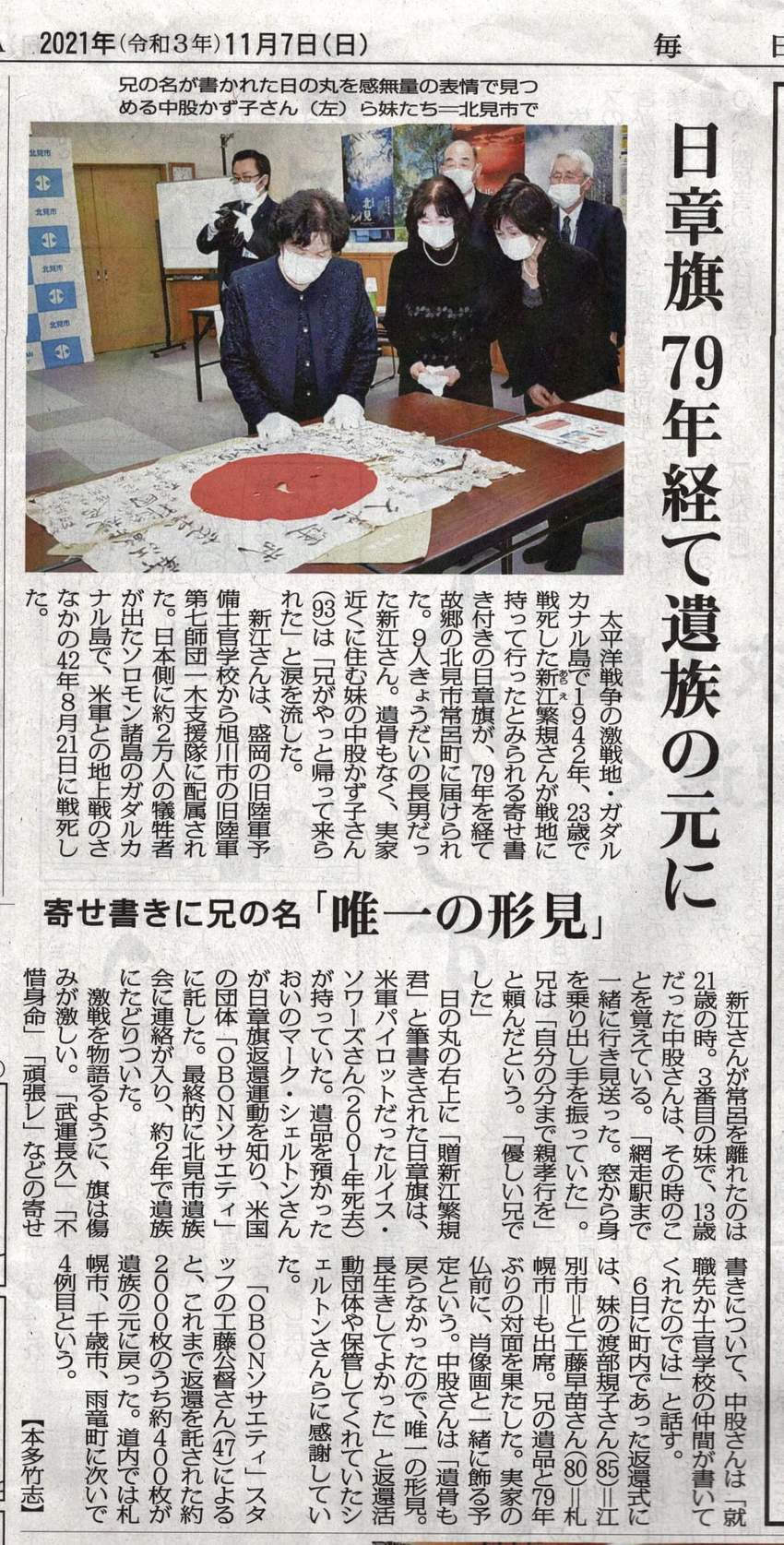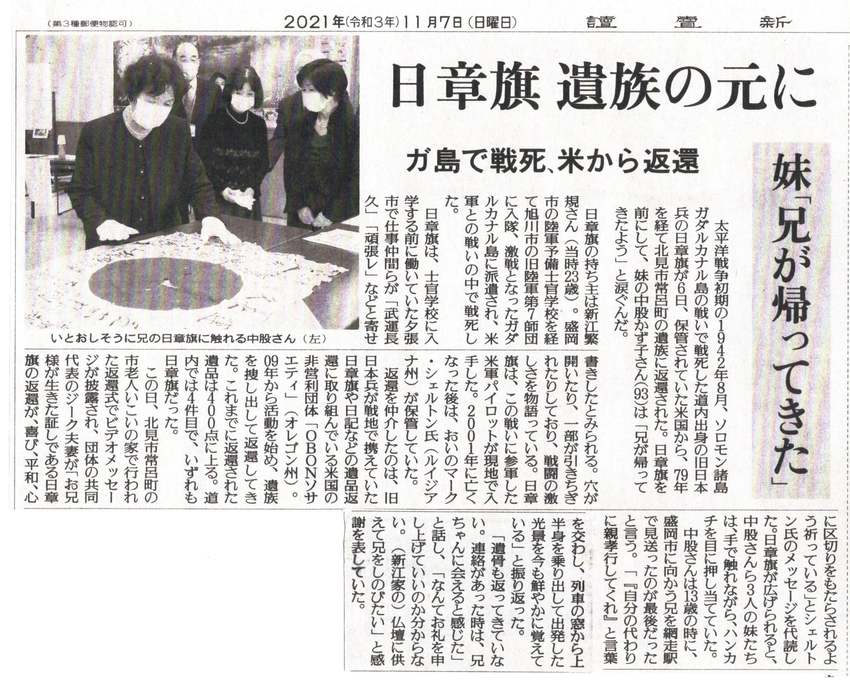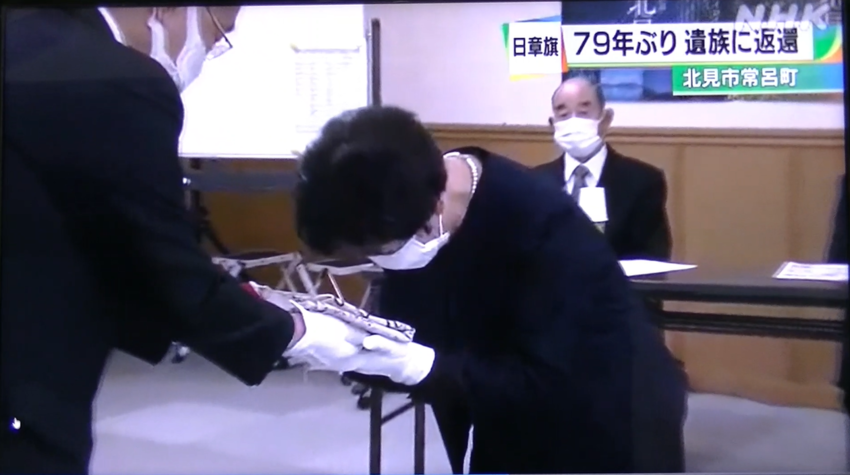
![【STARS AND STRIPES】 Navy vet’s...]()
Navy vet’s daughter returns Japanese flag taken as war trophy from Battle of Okinawa.
TOKYO — A Japanese flag, brought to America by a U.S. Navy sailor from the Battle of Okinawa, has been returned to the family of the soldier who carried it into battle more than three quarters of a century ago.
The signature-covered flag, brought home from the war by James Ellis Mercer, was returned by his daughter Linda Hahn, 72, of Concord, Calif.
Many Japanese soldiers carried the red and white flags inscribed with names and messages from family and friends for good luck.
The flag was accepted by Yoshinori Goto, 45, of Oita city, the grandson of Kesaji Goto, a Japanese Imperial Army soldier who carried the flag and died July 1, 1945, on Okinawa. The ceremony, which Hahn didn’t attend, took place Jan. 16 at the Gokoku Shrine in Oita.
Mercer, a machinist’s mate from Goodland, Kan., served aboard the seaplane tender USS Bering Strait. The warship supported aircraft that rescued dozens of downed airmen and sailors from stricken vessels during the Battle of Okinawa from April to June 1945.
The flag was folded inside an album of war photographs left by Mercer, who died in 2003 at age 83, Hahn said in a telephone interview Wednesday.
The family knew he served on Okinawa but not many other details of his wartime experience.
“He never talked about it,” Hahn said. “I don’t think it was a real happy time for him.”
After the war, Mercer set up a machine shop and worked on heavy vehicles such as forklifts and trucks, she said.
A retired bank employee and mother of one, Hahn contacted the Obon Society in September after hearing about their work from a friend. The nonprofit group helps veterans and their families return old war trophies like flags and swords.
“I thought in my heart that if the situation were reversed and it was my son who was getting something from my father, I would want that,” she said.
The society tracked down Kesaji Goto’s relatives within a couple of months. Goto was from Fujiwara village in Oita prefecture. His name is written on the flag in kanji characters.
“I am thankful that they had kept it until now and even decided to return it,” Yoshinori Goto, an employee of the Oita prefectural government, told Stars and Stripes by phone.
Kesaji Goto died in his early 30s and left behind a wife and 1-year-old son, his grandson said.
The family tomb includes an engraving of Kesaji Goto’s name. So does a monument at the Peace Memorial Park on Okinawa, Yoshinori Goto said.
The family kept a photo of their fallen relative but didn’t talk about him a lot. It was a surprise when the War-Bereaved Families Association contacted them about the flag, he said.
Some Japanese relatives of war dead, citing little or no connection with the original owners, decline to receive returned flags, but Goto had no hesitation accepting it, he said.
The news was “a bolt out of the blue,” he said. “I definitely wanted to receive it.”
The flag includes his father’s name, Shoji Goto, between his grandparents’ names.
“This shows that my father was either born or at least his name was picked when my grandfather went to war,” he said.
The flag’s return gave him a chance to talk about his grandfather with his children, he said.
“I hope people will take an opportunity to think about peace,” Yoshinori Goto said.
Although he had seen a photograph of the flag before receiving it, it felt different touching it, he said. “It tells a story,” he said. “I felt the soul of my grandfather.”
HANA KUSUMOTO - https://www.stripes.com/theaters/asia_pacific/2022-02-03/japanese-flag-return-battle-of-okinawa-us-navy-world-war-ii-4571775.html?fbclid=IwAR1dUu7qKMExYMkOPGvNQ-942W0H0sBxP2GlkzKJWCpC51-HDNxiWbmycwI
![Bethany Glenn and her late gra...]() Bethany Glenn and her late grandfather, John C. England
Bethany Glenn and her late grandfather, John C. England
"Families on both sides of Pacific War find closure"
Dated Dec. 27, 2021 Yotsumoto Jun: NHK World Correspondent:
The families of people who die at war often find their grief is compounded by lack of closure. One American woman recently gave her grandfather a fitting sendoff decades after he was killed in the attack on Pearl Harbor. She's now helping families on the other side of that conflict find the same sense of release.
For more article, please click link below:
https://www3.nhk.or.jp/nhkworld/en/news/backstories/1845/
![These photographs are part of ...]() These photographs are part of a collection long held by World War II veteran Wiekko Seppo, a Marine from Duluth who fought in the Pacific Theater in 1944 and 1945.
These photographs are part of a collection long held by World War II veteran Wiekko Seppo, a Marine from Duluth who fought in the Pacific Theater in 1944 and 1945.
![Part of the challenge in the p...]() Part of the challenge in the photo mystery is deciphering the Japanese writing on the back of the photos.
Part of the challenge in the photo mystery is deciphering the Japanese writing on the back of the photos.
![Dick Jessor turned 97 this wee...]() Dick Jessor turned 97 this week and is a veteran of World War II who fought at Iwo Jima, in the 25th Marine Regiment. Weikko Seppo served in the 24th.
Dick Jessor turned 97 this week and is a veteran of World War II who fought at Iwo Jima, in the 25th Marine Regiment. Weikko Seppo served in the 24th.
![Jessor said taking photos off ...]() Jessor said taking photos off dead enemy soldiers wasn't common, unlike collecting flags the Japanese wore signed by family members wishing them good luck on the battlefield.
Jessor said taking photos off dead enemy soldiers wasn't common, unlike collecting flags the Japanese wore signed by family members wishing them good luck on the battlefield.
![【Pine Knot News...]()
![Dick Jessor]() Dick Jessor
Dick Jessor
The sepia-toned photographs, slightly larger than a business card, tumble out of a browning, mottled envelope. For what is known of the six photos, and also what is enticingly unknown, the sight of them is breathtaking.
Keiko Satomi punctuates the moment.
"It's just," she pauses. "It has a weight."
From what can be pieced together across nearly eight decades, the photographs were found on the bodies of dead Japanese soldiers during a Pacific Theater battle in World War II. There are pictures of three women in formal dress. Sisters? A mother? A girlfriend? There is a family photo. Two pictures of soldiers. There is some identifying writing on the back of them, in columns of scribbled Japanese forms.
Keiko Satomi has been charged with finding more about the photos, and to perhaps get them back to families in Japan.
"It's such history," she said from a table in the children's section of the Cloquet Public Library where she works. "These were passed hand to hand with so much emotion. You think of how much they meant" to the soldiers.
We know the hands from which the photos passed since the end of the war in 1945. It was a Finlander from Duluth, to a German-born wife in Cloquet and, now, to a librarian, born in Japan.
The Marine
Weikko Seppo was too short. Five feet and 4 inches tall, he somehow got accepted for the Marine Corps after being drafted into the Army. He left Duluth and trained in California as part of the then novel amphibious Marine divisions created to bolster the U.S. presence in the Pacific.
They were trained for beach landings and fighting the enemy on established enemy turf on remote islands needed for aircraft staging.
Seppo fought on Tinian in August of 1944 and Iwo Jima in February and March of 1945, among others. In those two battles, he was injured, and received a Purple Heart medal and Gold Star.
Seppo died in 2001 at age 77. What is known about the photographs comes from his wife of 26 years, Susanne Stiefel Seppo.
On her mind
Susanne is among thousands of people across the country who have found themselves clearing things from their homes during the pandemic. The photographs have been on her mind for some time, especially since meeting Keiko Satomi as a frequent Cloquet library user. Satomi was born in Japan, and maybe she could find something out about the photographs.
Born in Germany and raised in Duluth, Susanne was a generation younger than Weikko. They married in the mid-1970s. He told tales of the war, and certainly had nightmares, but she never could piece it all together. She said he suffered from Alzheimer's disease in his 50s, likely the result of his war injuries. Before he died, he had been in a care facility for some time.
"I didn't want to do anything (with Weikko's war relics) while he was living," Susanne said. "The pictures have been in a box for years. I thought it was time to find them a home, and I thought of Keiko."
Resources
Keiko Satomi is using family and friends in Japan to try to piece together information on the six photographs. She put the images on Facebook and asked for help in deciphering the writing. She saw that one picture showed a military member wearing a hat saying "Sasebo Navy" on it. Sasebo was a large seaport in western Japan in the Nagasaki Prefecture. It was an important base for the Japanese and was on a list of 17 sites designated by the U.S. for an atomic bomb drop.
Satomi heard back from people at City Hall in Sasebo. They identified the name and address of the man in the photo and confirmed that he was a casualty. They are looking for any possible family members.
Satomi also contacted the Obon Society in Oregon, which helps Americans in returning war relics to Japan. Its director said she would take on the photograph project. Most commonly, Obon deals with the "good luck" flags the Japanese wore before going off to service. They are deeply personal objects, signed by family and friends with messages. They became common bounty for American soldiers.
Survivor
Dick Jessor was the same age as Weiko Seppo when he fought in a neighboring division of the Marines at Iwo Jima. He was planning on celebrating his 97th birthday on Wednesday. The Pine Knot News came across his name on a search for Iwo Jima veterans because he was in the news the past year, retiring from the University of Colorado Boulder as the longest-serving professor in the school's history: 70 years. He taught behavioral sciences and psychology.
Jessor said it was unusual for photographs to be taken from enemy soldiers. He recalled coming across a body outside his foxhole one morning and looking for one of those flags. He ended up finding letters on the soldier. The inhumanity of war hit home as he saw a commonality with his enemy.
"I didn't touch those," he said of the letters. "It was an epiphany. I had letters from home in my pocket. It really gave a whole sense of how crazy it was."
He said the fighting on Iwo Jima was so fierce, with the enemy hidden in bunkers underground, that it drove men to extremes when it came to how they reacted when coming across a Japanese body. Unspeakable things, Jessor said. "The anger and hostility just came out after being continually shot at by people you couldn't see. Being assaulted by an unseen enemy."
There were an estimated 20,000 Japanese on Iwo Jima when the Marines landed in February of 1945. Most of them died there. More than 7,000 U.S. soldiers died as well.
Jessor eventually did handle one of those Japanese flags. He has a hand grenade from the island sitting on his desk at home.
He said he couldn't say what may have been in Weikko Seppo's mind when he obtained the photographs. It remains a question if he got them from Iwo Jima or someplace else. "You do get a sense of how much the enemy is just like you," Jessor said. "Pawns in a battle. The sense throughout became an abstraction."
Seppo was a sharpshooter and "he killed a lot of Japanese," Susanne said. Perhaps he found in the photographs a moment to reflect.
Passing down
Satomi has studied the writing on the photographs and believes some of them may have been collected by a Japanese soldier before coming to Seppo. Some have two sets of handwriting on them, the original information a soldier may have written on them and then a different hand perhaps noting when the pictures were obtained from a dead soldier.
It could be that Seppo got the photos from one man who had been collecting the momentos in hopes of surviving and returning them to families.
"I hope I can find them a home," Satomi said.
She had a grandfather from Japan who survived the war after being captured by Russians and spending four years in Siberia.
Susanne Seppo said she's glad she has Satomi working on the mystery of the photographs. It really is a twist of fates: a native German finding a native of Japan to work out a Pacific island mystery sparked by a Finn nearly 80 years ago.
Susanne will take it. "What are my choices? Throw them out?"
If they find a home with family members in Japan, that will be more than she could imagine, she said. "It will have some meaning to them."
********
If you have war relics from Japan
Contributed Photo
OBON SOCIETY, headquartered in Astoria, Oregon, is an international humanitarian organization that manages the largest and most experienced independent network in the world for returning personal heirlooms to families in Japan. With more than a decade of experience, their team of archivists, researchers and scholars receive, search and return personal items that were taken from the battlefields of WWII.
If you are in possession of personal item from WWII you want returned to the brothers, sisters, sons and daughters of missing Japanese soldiers, please do not hesitate to contact OBON SOCIETY.
OBON SOCIETY is a 501(C)(3) non-profit; they do not charge for this service.
The website has complete details at obonsociety.org or you visit their channel on YouTube to see interviews with veterans and their families by searching OBON SOCIETY.
https://www.pineknotnews.com/story/2021/11/26/people/photos-long-tucked-away-create-somber-intrigue/6285.html?fbclid=IwAR1ZtUZlKla4jf2jEsdar4UhVS-YtwAtgtn1WgWZ9oCJuQ5x7lB87n9VGfs

![Japanese Newspaper '' The Main...]()
79 years on, WWII Japanese soldier's good-luck flag returns from US to his bereaved family
KITAMI, Hokkaido -- After 79 years, a Japanese flag thought to have been taken to battle by a soldier killed in the Pacific War has finally returned to his hometown, the city of Kitami in Hokkaido. Upon receiving it, his sister said through tears: "My brother has finally managed to come home."
On the flag were messages addressed to Shigenori Arae, who died in 1942 aged 23 on Guadalcanal in the Solomon Islands. Arae was the eldest son of nine siblings. His 93-year-old sister Kazuko Nakamata, who lives near the family home, said that because his remains were never returned, the flag meant her brother could finally come home.
Arae was assigned from the Imperial Army reserve officers' academy in Morioka, Iwate Prefecture, to Colonel Kiyonao Ichiki's detachment of the Imperial Japanese Army's 7th division in the Hokkaido city of Asahikawa. He was killed in combat against U.S. forces on Guadalcanal on Aug. 21, 1942, one of some 20,000 Japanese who died in the battle.
Arae was 21 when he left the Tokoro-cho neighborhood, now part of Kitami. His sister, Nakamata, then 13, recalled the day: "I went with him to Abashiri Station and saw him go. He leaned out the window and waved to me." Her big brother apparently asked her to "be good to our parents for me, too." "He was a kind brother," she said.
The flag, which has the words "presented to Shigenori Arae" written in its upper right corner, was found among the belongings of Louis Sowers, a U.S. military pilot who died in 2001. His nephew Mark Shelton was taking care of it when he learned about the movement to return Japanese flags. Shelton entrusted it to the Obon Society, an American non-profit organization. Eventually, they contacted the bereaved family association in Kitami, who took about two years to reach Arae's family including Nakamata.
The flag is quite damaged, as if telling of a fierce battle.
The inscriptions on it include "Buunchokyu (long-lasting good luck in battle)," "Fushakushinmyo (unsparing devotion to Buddhism)" and "Ganbare (do your best)." "They were probably written by his colleagues at work or at the military academy," Nakamata said.
A handover ceremony in Kitami on Nov. 6 was also attended by Arae's other siblings, Noriko Watanabe, 85, and Sanae Kudo, 80, who both live in Hokkaido. It was the first time the sisters had seen their brother's belongings in 79 years. They plan to display the flag along with his portrait in front of the Buddhist altar at the family home.
Nakamata thanked the involved parties including the Obon Society and Shelton, saying, "His remains were never returned. This is the only memento of him. I'm glad I lived long enough to see it." Obon Society staff member Kosuke Kudo, 47, said about 400 of the around 2,000 flags entrusted to it so far have been returned to bereaved families. This is the fourth case in Hokkaido, following others in Sapporo, Chitose, and Uryu.
https://mainichi.jp/english/articles/20211113/p2a/00m/0na/004000d?fbclid=IwAR3p5yrc_R1mYwPCixB9oPz_SVAe3QSmd_NK4710dj1GQYZZwv-Q8kKJjXA

![オホーツク地区新聞【伝書鳩】/...]()
兄ちゃん、お帰り 2021-11-10 掲載(北見市/社会)
北見市常呂の新江繁規さん遺品
太平洋戦争で旭川の陸軍支隊に所属し、激戦地ガダルカナル島で1942(昭和17)年に戦死した、北見市常呂の新江(あらえ)繁規さんが戦地で持っていた日章旗が6日、同市在住の妹ら遺族のもとに返還された。旧日本兵の遺品返還を進める米国の非営利団体OBON(オボン)ソサエティが日本の遺族会の協力を得て実現。81年を経て故郷に帰ってきた兄の生きた証を握りしめ、妹達は「兄ちゃんに会えた」と涙を流し、受け取った。
約80年経て日章旗が妹らの元へ
激戦地ガダルカナルで戦死
米国OBONソサエティの仲介で返還
当時の常呂村豊浜の新江家に生まれた繁規さんは20歳で徴兵検査に合格し、21歳で旭川の部隊に入営するため、働いていた夕張炭鉱を出征。その際に同僚らが寄せ書きした日章旗と思われる。武運長久、七生報國など気持ちを高ぶらせる言葉が並ぶ。
そのとき13歳だった三女の中股かず子さん(93、北見市常呂)は、いったん故郷・常呂に帰ってからの出征を網走駅まで見送りに行った。五女の渡部規子さん(85、江別市)は6歳で「お風呂に入れてくれたり、いい人でした」、六女の工藤早苗さん(80、札幌市)は「市松人形を買ってくれました」とそれぞれ思い出を語る。
新江さんは旭川で一木支隊に配属。OBONソサエティと日本遺族会常呂支部によると「一木支隊には、この地方からかなり配属になり、熊部隊と呼ばれ強健で、畏れられた」という。42(昭和17)年8月に空港奪還の命令でガダルカナル島に上陸侵攻したが、まちぶせに遭い、先発隊の多数が壊滅した。
元米軍パイロットの米ルイジアナ州に住む親族がテレビで遺品返還の活動を知り2019年に同団体に連絡。札幌在住の同団体日本スタッフ・工藤公督さんが「新江という珍しい名前を頼りに」探し出したそう。道内では4例目の返還となった。親族は米国から遺族宛に「心のくぎりとなりますように」とビデオメッセージを寄せた。
6日、市常呂老人いこいの家に妹ら家族3人が集まり、辻直孝市長を通じて返還された。同遺族会の土本勝昭常呂支部長が「お兄さんが帰って来たね」と声を掛けると、中股さんは涙を旗で隠した。そして「兄の形見であり宝ものです。仏壇に供え、みんなで兄ちゃんをしのびたい」とお礼の言葉を述べた。 https://denshobato.com/BD/N/page.php?id=124771&fbclid=IwAR0VY33UrjaDDMkpQgPdJ5-o-dSw7jb7sWU_iMhwosLJ00CssV_isoSdI6M
毎日新聞・読売新聞・北海道新聞がそれぞれ紙面で北見市常呂町で行われた日章旗返還式について記事を掲載して下さいました。
太平洋戦争で戦死した北見市出身の男性が戦地へ持って行った日章旗が
6日、79年ぶりに遺族のもとに返還されました。
北見市常呂町出身の新江繁規さんは、1942年8月、太平洋戦争で出征していたガダルカナル島で戦死しました。当時23歳でした。
その後、新江さんが戦地に持って行った日章旗を元アメリカ兵のパイロットの男性が保管していたことから、遺族への返還が実現することになり、6日、返還式が行われました。
式には、遺族を代表して妹の中股かず子さんや遺品の返還を行っているアメリカの団体の職員などが出席しました。
ビデオメッセージで、団体の代表が保管していた男性のおい、マーク・シェルトンさんの手紙として、「新江さんが生きた証である日章旗の返還で心に区切りがもたらされれば」と読み上げたあと、旗が返されました。
日章旗には、戦地へ行く際、当時の勤務先の人などから贈られたとみられる寄せ書きが書かれています。
受け取った中股さんたちは「やっと返ってきた」などと話しながら涙を拭っていました。
中股さんは「島は激戦地だったので旗が戻るとは夢にも思わず、当時戻らなかった兄の遺骨が帰ってきた気がします」と話していました。
https://www.youtube.com/watch?v=655lVmjokk0
https://www3.nhk.or.jp/sapporo-news/20211106/7000039955.html?fbclid=IwAR1V3L8CdxIa_Y4jiMpSNllblcpooqSzJLh13BtIsQGyWwsomGdJhRwsThU
米国で長年保管されていた日章旗が1945年8月に中国北東部(旧満州)で戦死した長崎市出身の松尾昇さん(享年29)のものと分かり5日、同市城栄町の県護国神社で遺族に返還された。おいの松尾豊彦さん(84)=諫早市馬渡町=は戦後76年をへて手にした日章旗に「お帰りなさい」と声を掛けた。
旧陸軍の歩兵隊員だった昇さんは終戦間際、旧ソ連軍との戦闘で死亡した。昇さんの日章旗が米国に渡った経緯は不明で、米モンタナ州の米国人が知人から譲り受けて保管し、今年になって返還活動を続ける米国の非営利団体「OBON(オボン)ソサエティ」に提供。
同団体の日本人スタッフが持ち主を捜し、日本遺族会県連合遺族会が遺族を探し出した。
返還式で同遺族会の山下裕子会長(79)は「古里に帰られてお喜びと思います」と日章旗を遺族代表の豊彦さんに手渡した。豊彦さんは「叔父の記憶はないが『俺が帰ってくるまで元気でいてくれて、ありがとう』と声を掛けてもらったような気がした」と話した。
大戦中、出征した日本兵のほとんどが「寄せ書き日の丸」と呼ばれる日章旗をお守りのように携えた。その多くが戦場から戦利品として米兵らに持ち去られたという。
今回、日章旗には長崎高商(長崎大経済学部の前身)の柔道部の後輩たちが武運の祈りを込めて寄せ書きをしていた。「OBONソサエティ」スタッフで同学部卒業生の山本貴久さん(61)=熊本市=が大学の先輩と気づき、力が入ったという。
「贈松尾」と名字しか書かれておらず、山本さんは同窓会の協力を得て、寄せ書きした後輩の名前や柔道部の対戦表などから昇さんと特定した。返還式に駆け付けた山本さんは「先輩はとても柔道が強かったようだ。柔道部の後輩もきっと喜んでくれるはず」と安堵(あんど)の表情を浮かべた。
https://nordot.app/829523868699082752?c=174761113988793844&fbclid=IwAR0V7XFU2bFkTWj0wC0wJafpdnK8PQDG3CucQXyRUxn8R4G6DPr8z7cL1IE
- ブログルメンバーの方は下記のページからログインをお願いいたします。
ログイン
- まだブログルのメンバーでない方は下記のページから登録をお願いいたします。
新規ユーザー登録へ
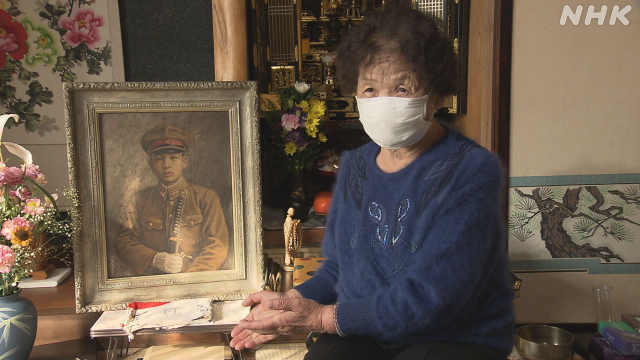 北見市に住む中股かず子さん
北見市に住む中股かず子さん
 学生時代の新江繁規さん
学生時代の新江繁規さん
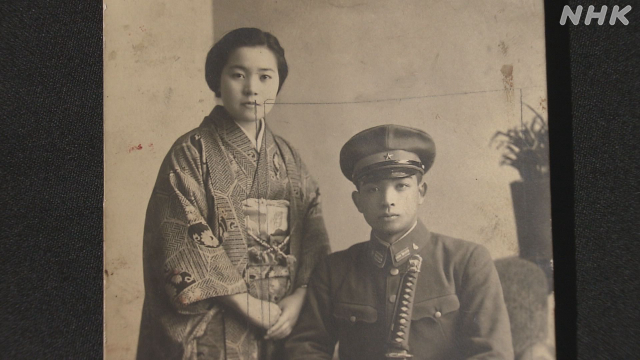 新江さんと許嫁
新江さんと許嫁
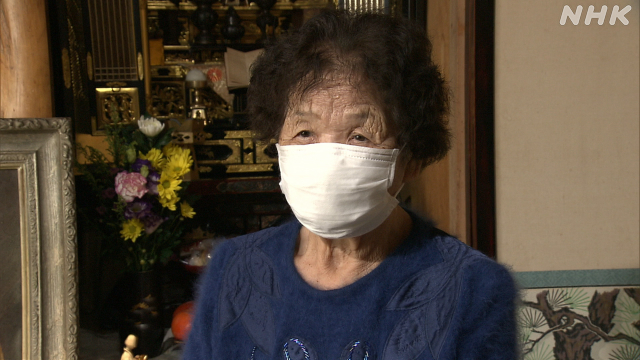
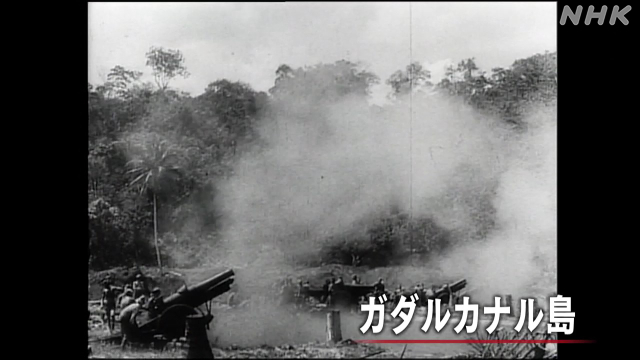 1942年のガダルカナル島
1942年のガダルカナル島

 新江さんの戦死を伝える文書
新江さんの戦死を伝える文書
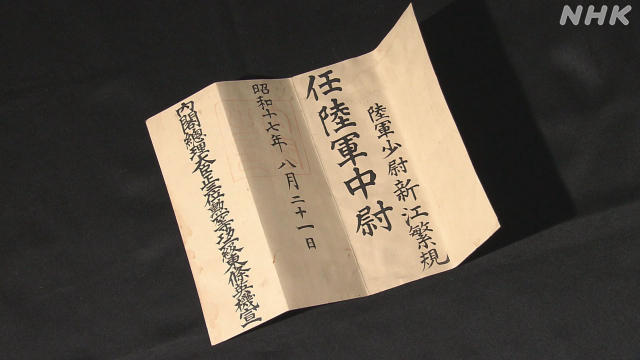 新江さんの昇進伝える文書
新江さんの昇進伝える文書
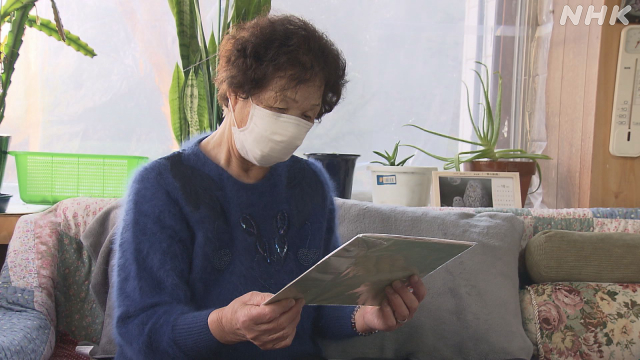 元兵士から送られてきた兄の写真を見つめる中股さん
元兵士から送られてきた兄の写真を見つめる中股さん
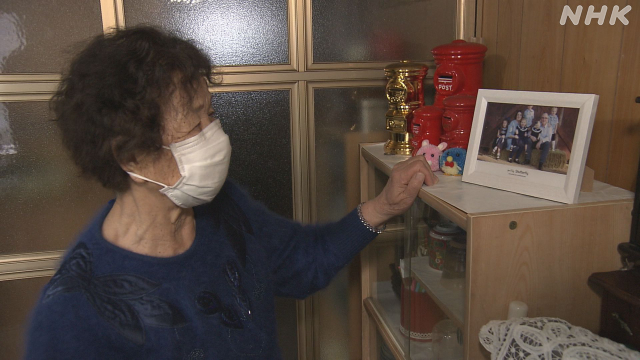 日章旗を返還したシェルトンさんの写真の前で話す中股さん
日章旗を返還したシェルトンさんの写真の前で話す中股さん
 マーク・シェルトンさん
マーク・シェルトンさん
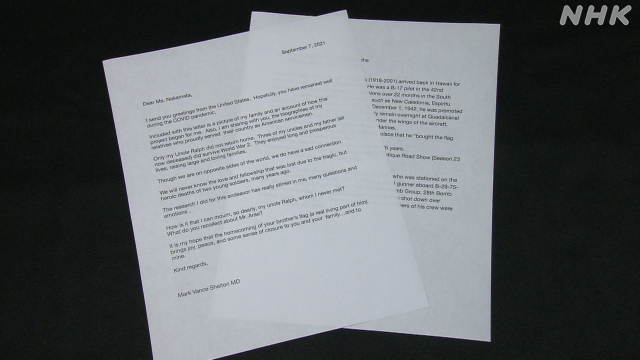 シェルトンさんからの手紙
シェルトンさんからの手紙
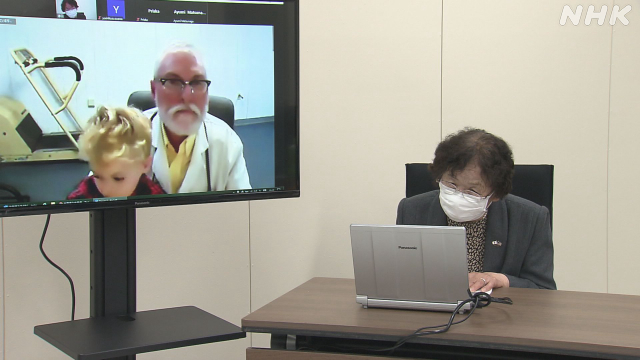
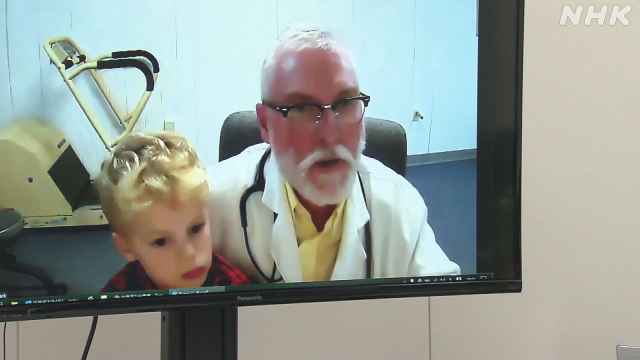 シェルトンさんと孫のジョセフ君
シェルトンさんと孫のジョセフ君
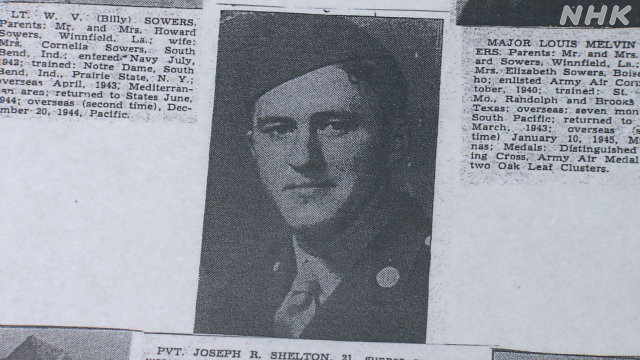 戦死したジョセフ・シェルトンさん
戦死したジョセフ・シェルトンさん
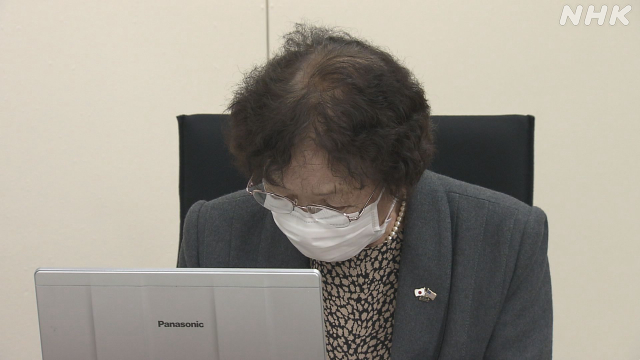 手紙を読む中股さん
手紙を読む中股さん
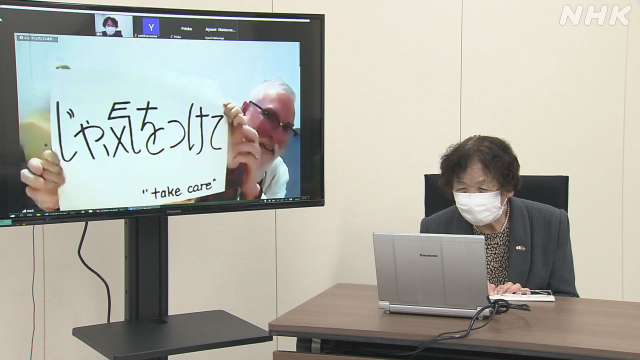 中股さんに別れのあいさつをするシェルトンさんとジョセフ君
中股さんに別れのあいさつをするシェルトンさんとジョセフ君
